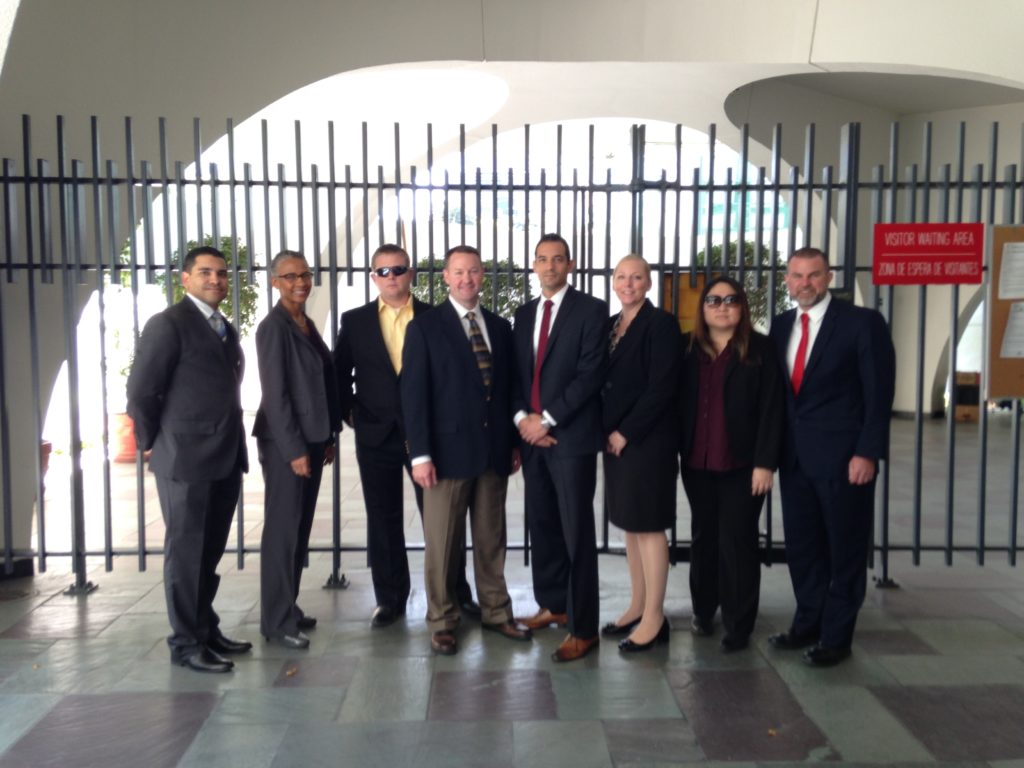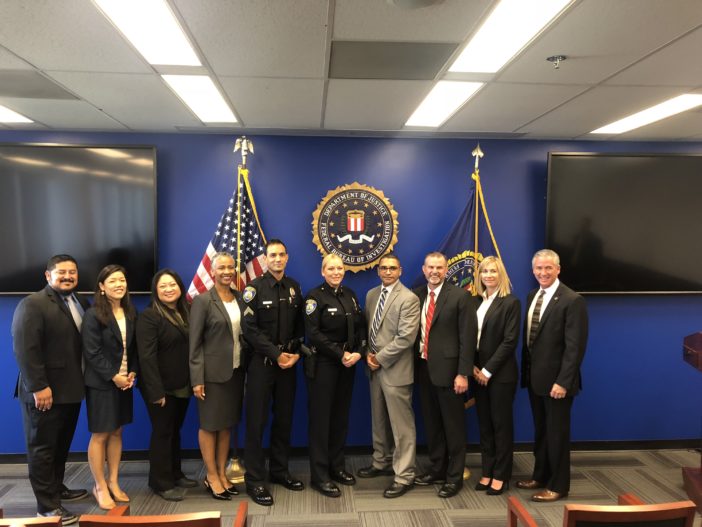Beverly Hills PD Det. Mark Schwartz opened the passenger-side door of a man’s car and gave him the “shh” symbol with his pointer finger to his lips. He slipped inside and closed the door. The man at the wheel was in a panic, preparing to race from a Beverly Hills bank to a strange location in the Valley. He had several thousand dollars with him, and he was on the phone.
In the summer of 2015, the Beverly Hills Police Department started receiving a steady stream of odd complaints. Someone was calling residents, telling them that their children had been kidnapped and would be harmed if demands for money weren’t immediately met.
The calls were terrifying. And they were fake.
Before a task force including FBI agents, Internal Revenue Service criminal investigators, Beverly Hills PD, Los Angeles PD and detectives from the Montgomery County Sheriff’s Office in Texas solved the case, virtual kidnappings terrorized affluent neighborhoods across the nation for more than two years. The scheme involved incarcerated criminals in Mexico, who bribed prison guards for cell phones, which they then used to place horrifying, fake ransom calls. While callers targeted an untold number of victims, prosecutors were able to convict those involved for convincing more than 80 people in the U.S. that their loved ones were in danger and scammed them out of nearly $87,000 collectively.
Several Beverly Hills victims of this cruel scheme scrambled across Los Angeles to Western Unions, MoneyGrams and other locations, convinced that sophisticated kidnappers were tracking their every move and terrified that their children were in mortal peril. These victims followed directions dutifully, including the instruction to not get off the phone or try to contact their loved ones until the transaction was complete.
Others, particularly those who didn’t have children, hung up on the callers immediately and notified the police. When the calls first started coming in, Det. Schwartz was taking an FBI training course. He was a new father and had tremendous empathy for the victims.
“I recall how awful these were. The torment for somebody to have to go through something like that, even finding out later that it wasn’t real, I couldn’t imagine the fear,” said Schwartz, who reached out to an FBI agent he met in his training program. “The FBI didn’t look at it as a scam. They looked at it as a violent crime because of the effect on the parent. It is really looked at as full-fledged extortion.”
BHPD took each one of these calls at face-value, too.
“This is not a letter. They would have somebody in the background screaming, ‘Help me.’ It’s beyond a scam. I’ve worked violent crimes, and I would put this right up there with them,” he said. “All of them were treated as real. We were using resources as if somebody was kidnapped and held hostage.”
Schools were contacted – one was nearly on lock down – police visited homes, tracked people down at work and, in the case of Schwartz, even got into a car with a victim.

Anti-Virtual Kidnapping Task Force Members, including Beverly Hills PD, received a commendation from the FBI for their groundbreaking arrest.” Courtesy: Beverly Hills PD
An employee at the bank where a victim was withdrawing money realized that the man was responding to a ransom demand and called BHPD. When Schwartz found the man and got into his car, neither he nor the victim knew what to expect.
“They do a good job of pulling the strings and making you feel as though you’re being followed,” he said. While Schwartz and the victim were driving to the location of a wire transfer, BHPD located the man’s daughter. She had been taking a test at school and was unharmed.
“He broke down crying,” Schwartz said of the victim.
The ruse was taking up a lot of police resources, but it was also yielding a trove of information. Schwartz noticed certain patterns, including the fact that every victim had the same land line prefix.
“They were cold-calling. It took a while to realize that they would always call the victim at home first. Once they reeled a victim in, they’d say, ‘Give me your cell number.’ By the time the police were involved, the victim would forget that the original call was on the home number,” he said.
Schwartz was also instrumental in realizing that the Beverly Hills victims and LA victims were both wiring money to the same names in Mexico. Connecting those dots helped the FBI task force get a better picture of the scope of the crime.
Schwartz is quick to direct accolades to his fellow task force members, particularly to the Montgomery County Sheriff’s Office.
“Montgomery County Sheriff’s detectives did a really good job, they got a license plate and worked it up on the state level. They reached out to FBI in Los Angeles,” he said. “Once we met as a task force, we figured it out pretty quickly.”
While it was a group effort, BHPD is proud of the work Schwartz did and his determination in seeing the case through.
“He put all these agencies together to create a task force with the FBI. It led to the first-ever prosecution of this type of crime,” BHPD Lt. Elisabeth Albanese said.

Virtual Kidnapping Task Force members recognized by the Federal Bureau of Investigation for their role in the investigation and successful prosecution of the first case of its kind.
In July 2017, a federal grand jury in Houston returned a 10-count indictment against 34-year-old Yanette Rodriguez Acosta, including wire fraud and money-laundering charges.
Acosta’s involvement was part of the evolution of the scam that the FBI had been tracking for a few years before BHPD’s involvement. There is a cap on how much money can be wired internationally, which meant the scammers were “leaving a lot of money on the table,” Schwartz said. For a bigger payoff, they needed to convince victims to do a “money drop,” instead. It was that move that lead to the task force’s big break in the case.
Two victims from Montgomery County, Texas, had been extorted ransoms totaling $28,000, which they were directed to drop off at a specific location. Acosta picked up the ransom money and, after taking her portion of the payment, wired the rest in small amounts to several people in Mexico. Those individuals then transferred the money to the Mexican prisoner believed to be running the scheme.
Once the dots were connected, Montgomery County Sheriff’s Dept., the FBI, the IRS, Los Angeles PD and Schwartz all converged for the arrest. BHPD and LAPD were there to provide surveillance assistance. Then a funny thing happened.
“As the apprehension team is turning the corner, she leaves her house in her car. The only ones to see this are LAPD and me in the surveillance car. We don’t have radios. We’re in Texas, and we don’t know the area. We were somehow able to communicate where we are and where she is,” Schwartz said. “Next thing we know, Montgomery County Sheriff’s officers slide by us, pulls her over and boom.
“It was funny that it ended up being three LA officers who found her and initiated that arrest,” Schwartz said. “It’s definitely one of the cooler things I’ve done on the job.”
Virtual kidnapping cases are difficult to investigate and prosecute because nearly all of them originate in Mexico, making the wire transfers difficult to trace. According to the FBI, the charges against Acosta represented the first federal indictment in a virtual kidnapping case. Schwartz and the other members of the task force returned to Texas for the sentencing.
“The judge hit her hard,” he said.
Chief U.S. District Judge Lee H. Rosenthal sentenced Acosta to serve 88 months in prison, followed by three years of supervised release.
“In handing down the sentence, the court noted that there was evil in the world and that the defendant had a gleeful disregard for the victims, causing pain, fear and long-term effects for profit,” according to a Department of Justice press release.
Schwartz was moved by the testimony of witnesses, some of whom include law enforcement officers who fell for the scam themselves.

Anti-Virtual Kidnapping Task Force Members, including Beverly Hills PD, received a commendation from the FBI for their groundbreaking arrest.” Courtesy: Beverly Hills PD
“When you heard these stories for the victims themselves…. One of the women had a breakdown on the stand, and they had to call the paramedics. She had a panic attack and couldn’t breathe,” he said. “You really got an understanding of the fear.”
It’s a fear that stays with people, Schwartz said.
“I can’t tell you how many people I spoke to who are still in therapy,” said Schwartz, who, along with Albanese and all task-force members, received a commendation from the FBI for their work on the case. “They said it is still painful, they still have anxiety every time they picked up the phone.”
 Behind the Badge
Behind the Badge



